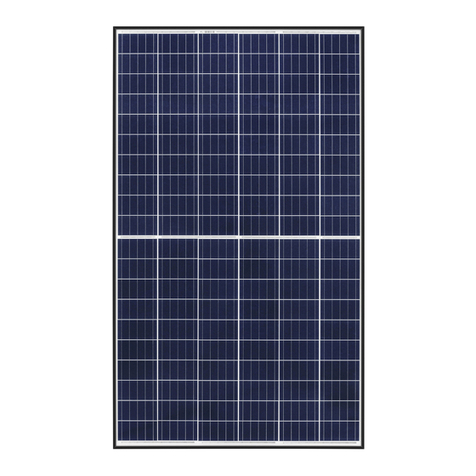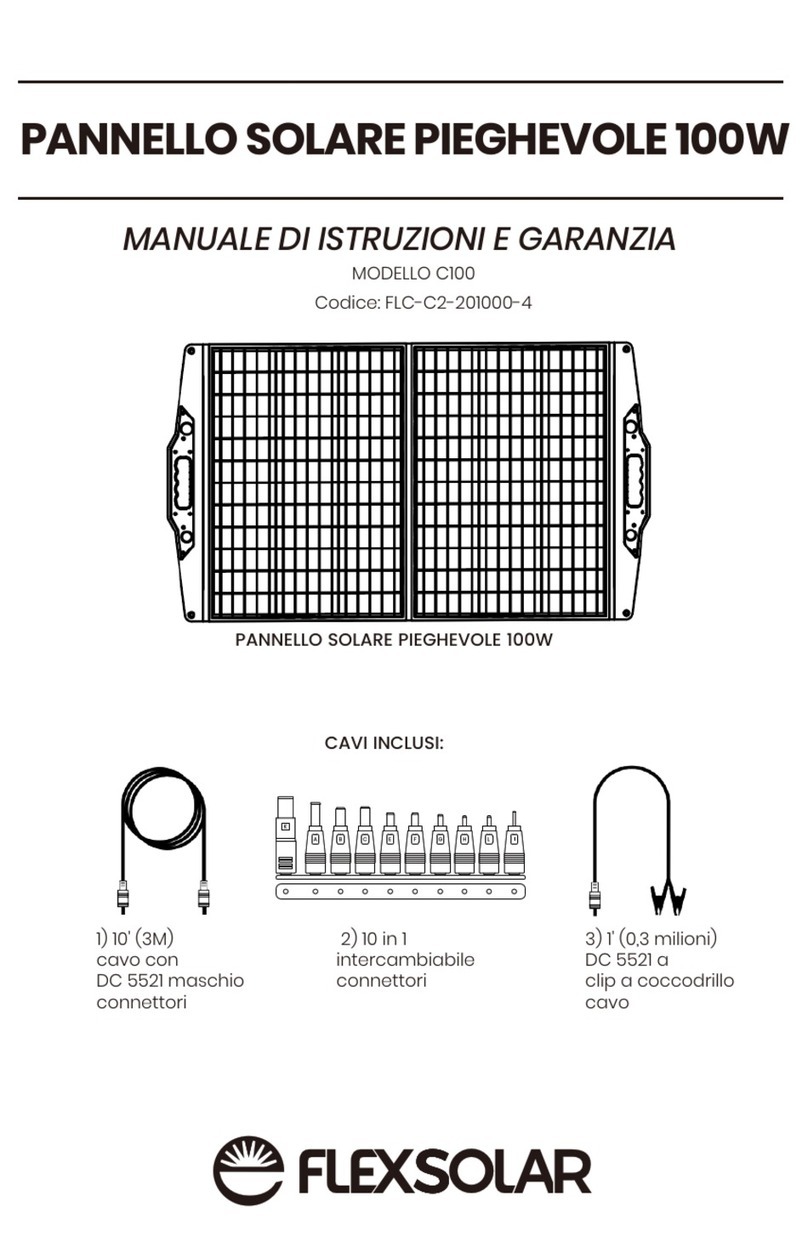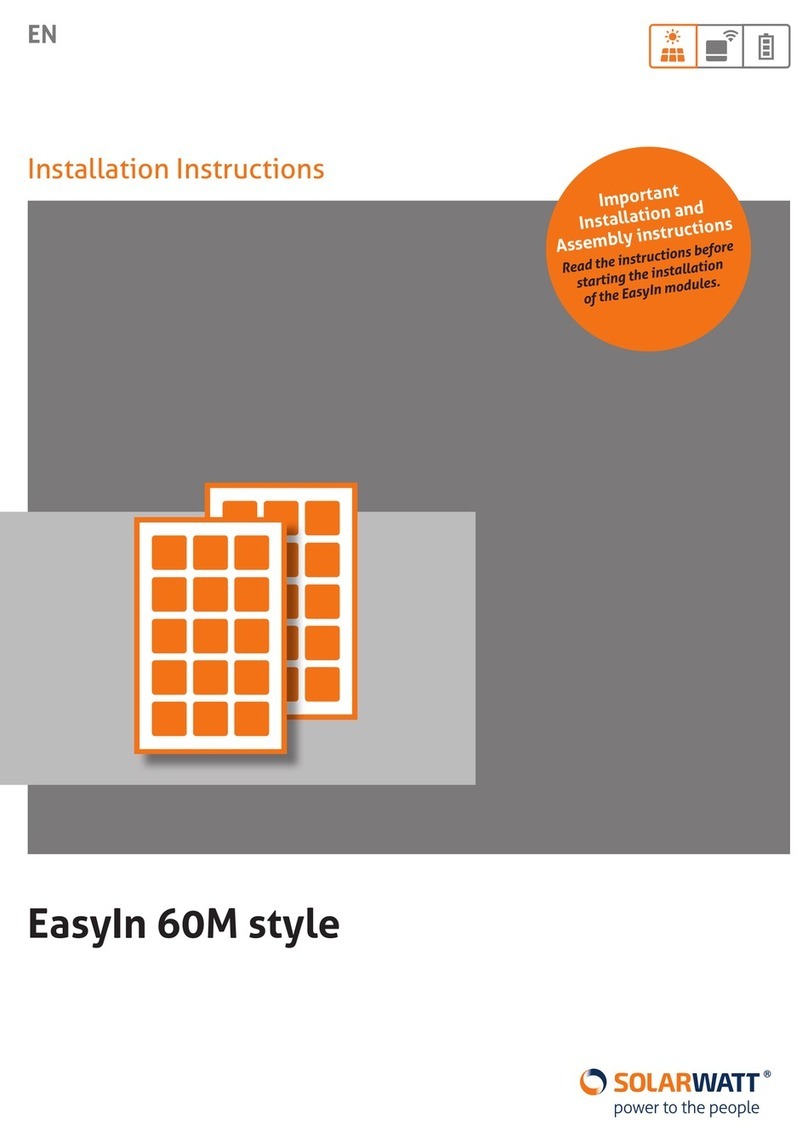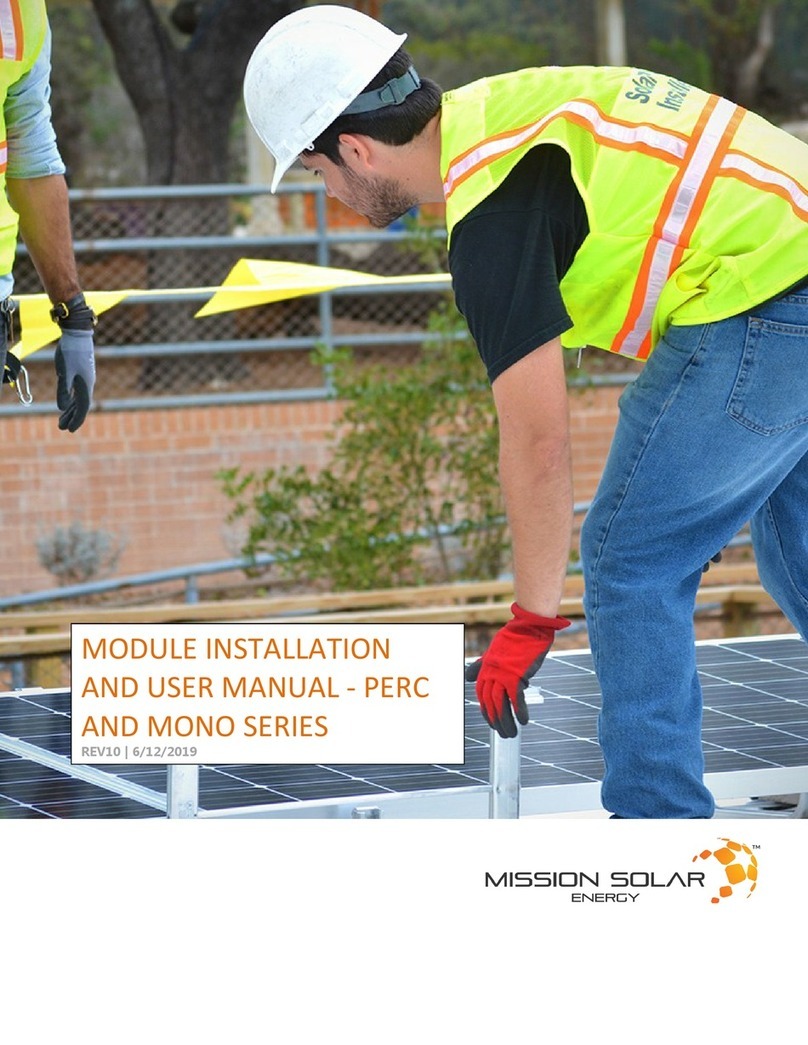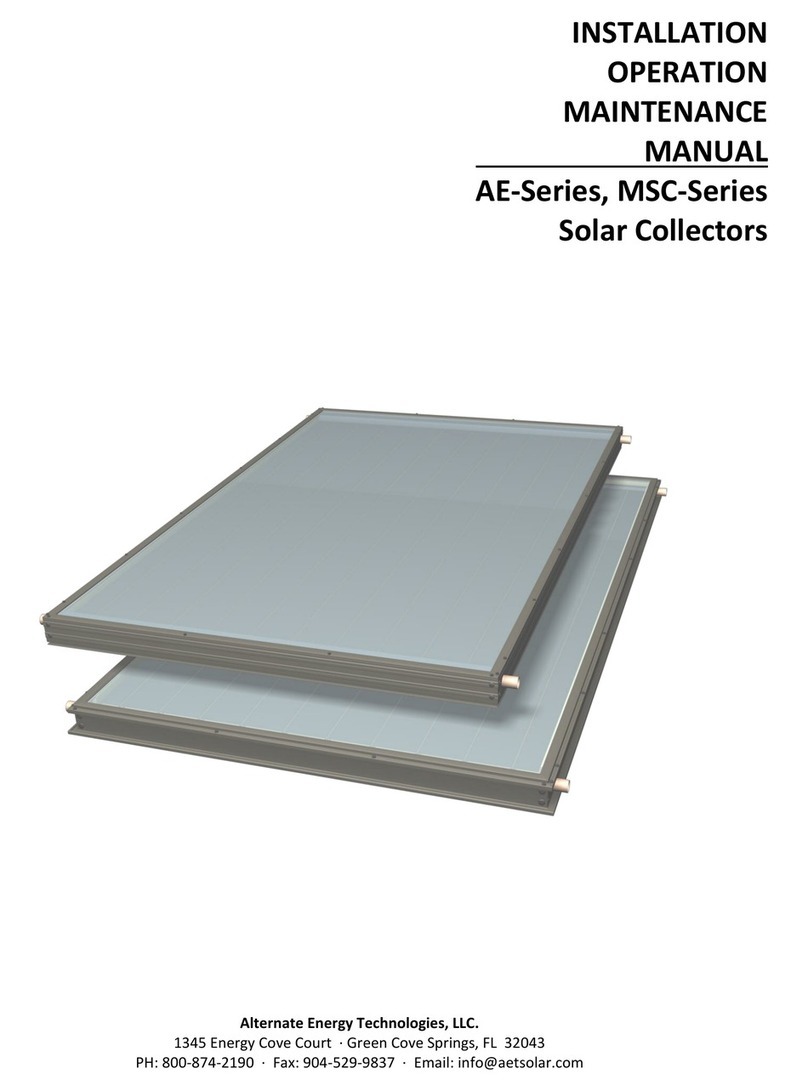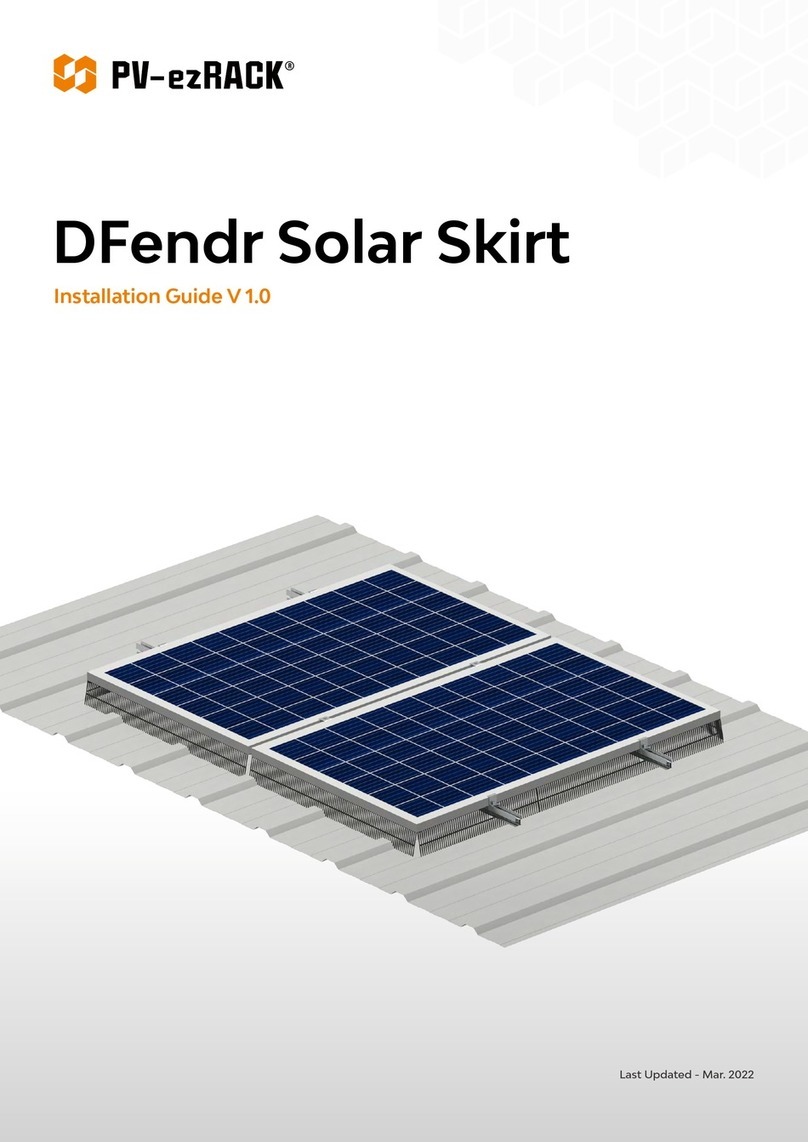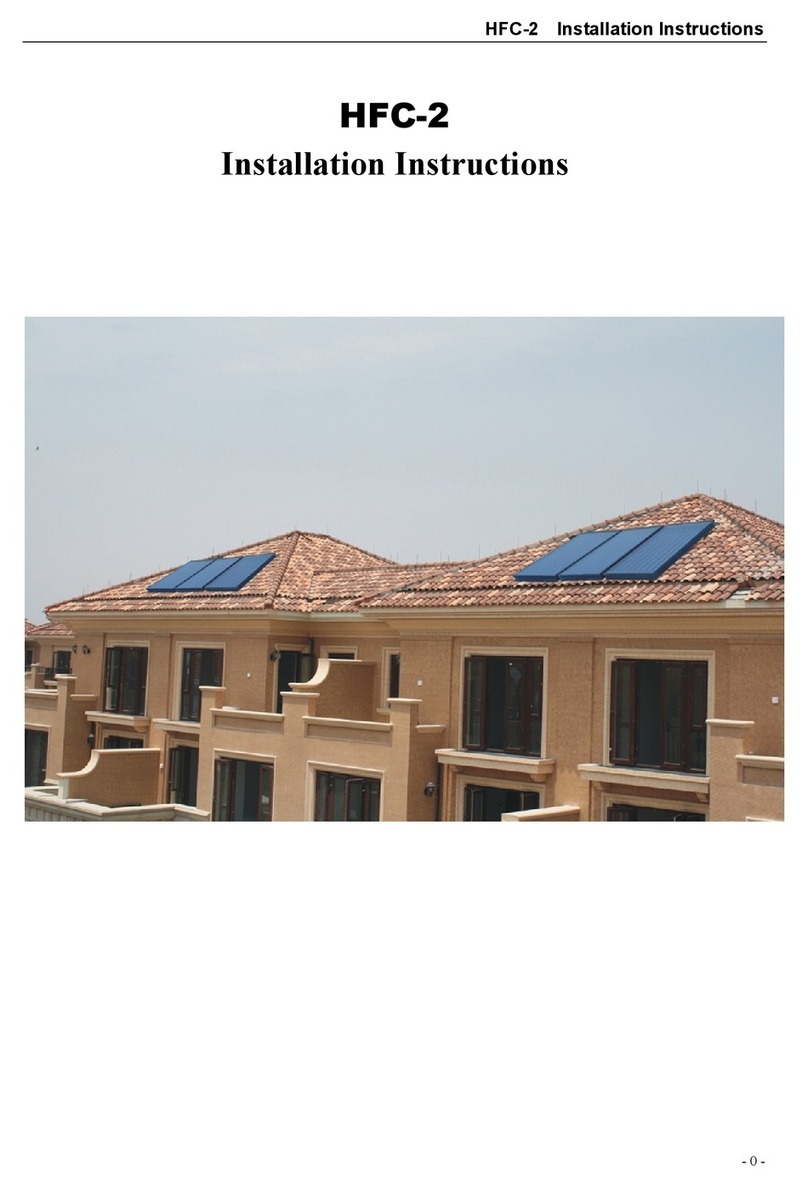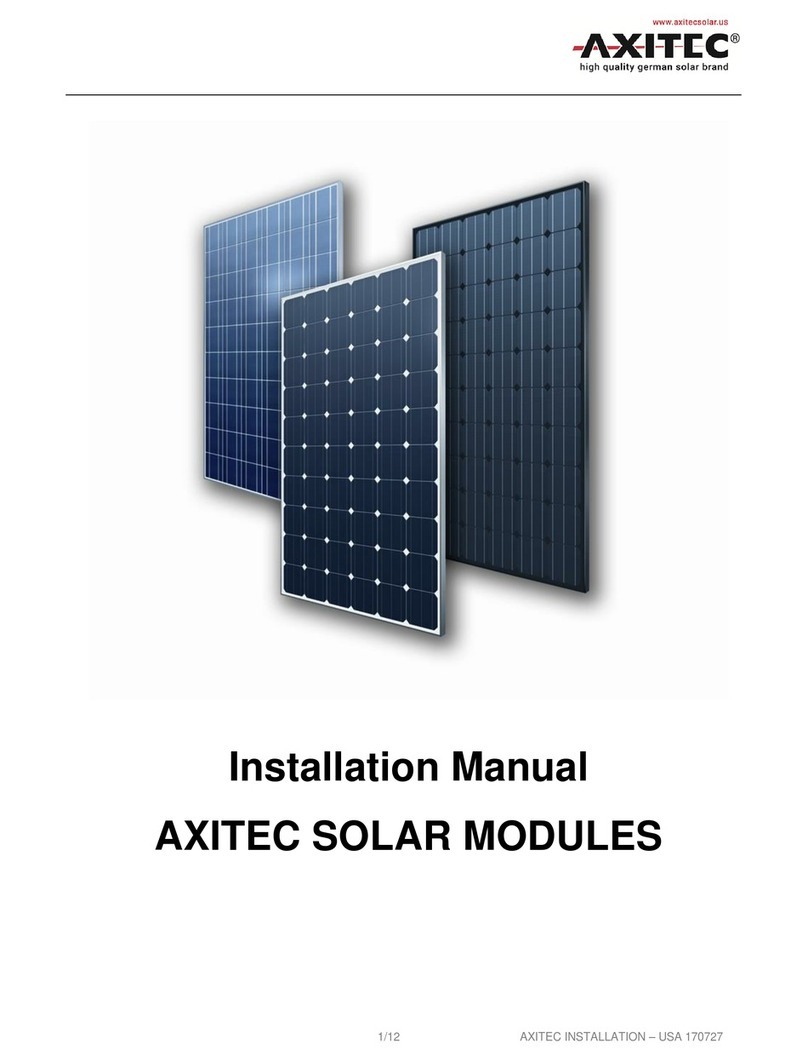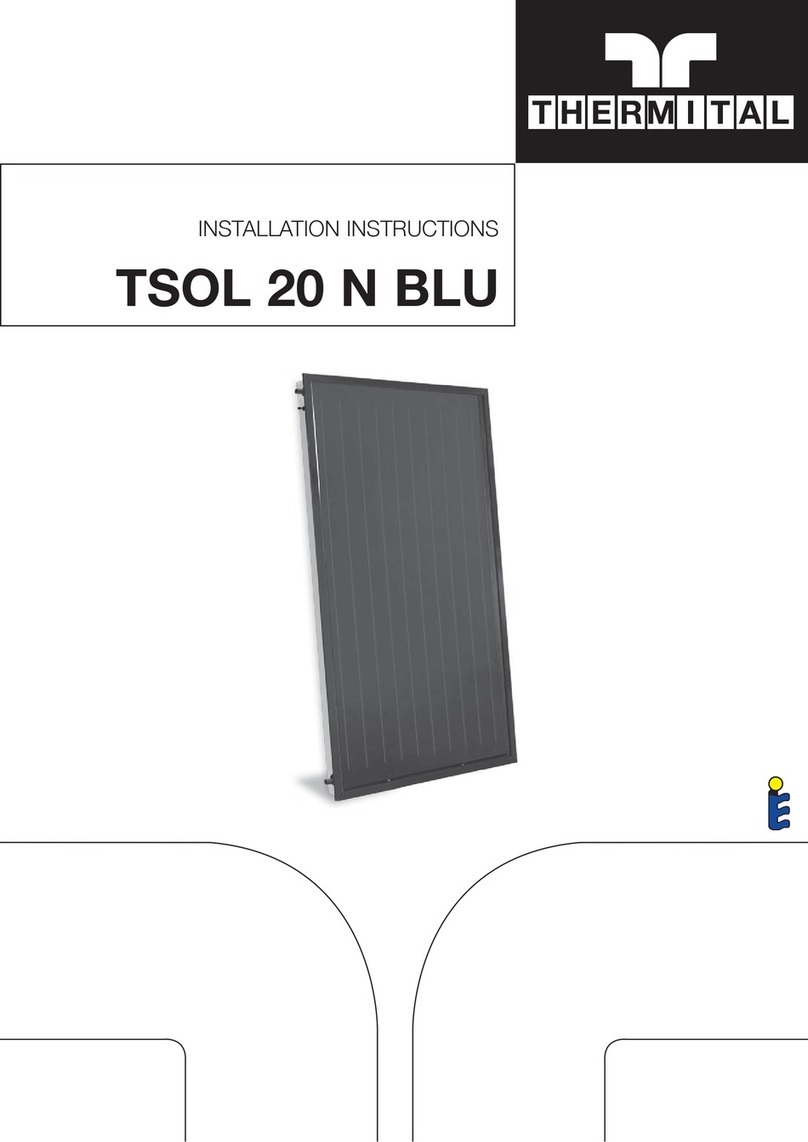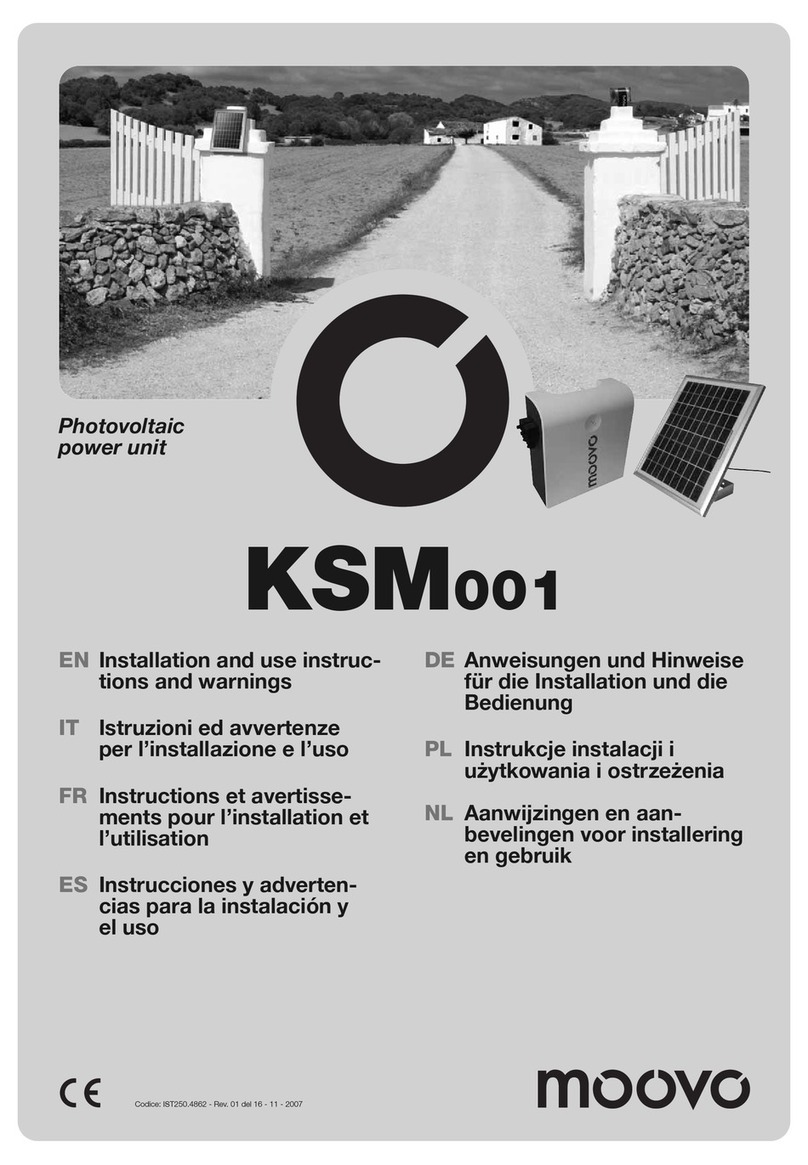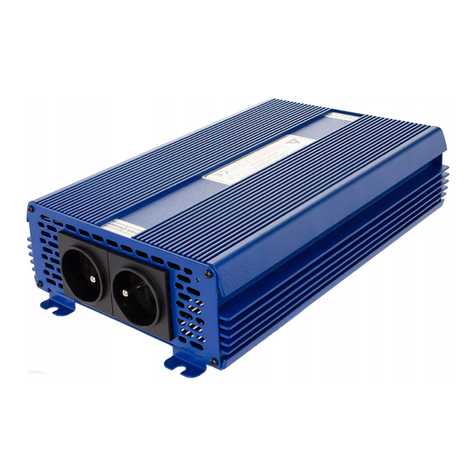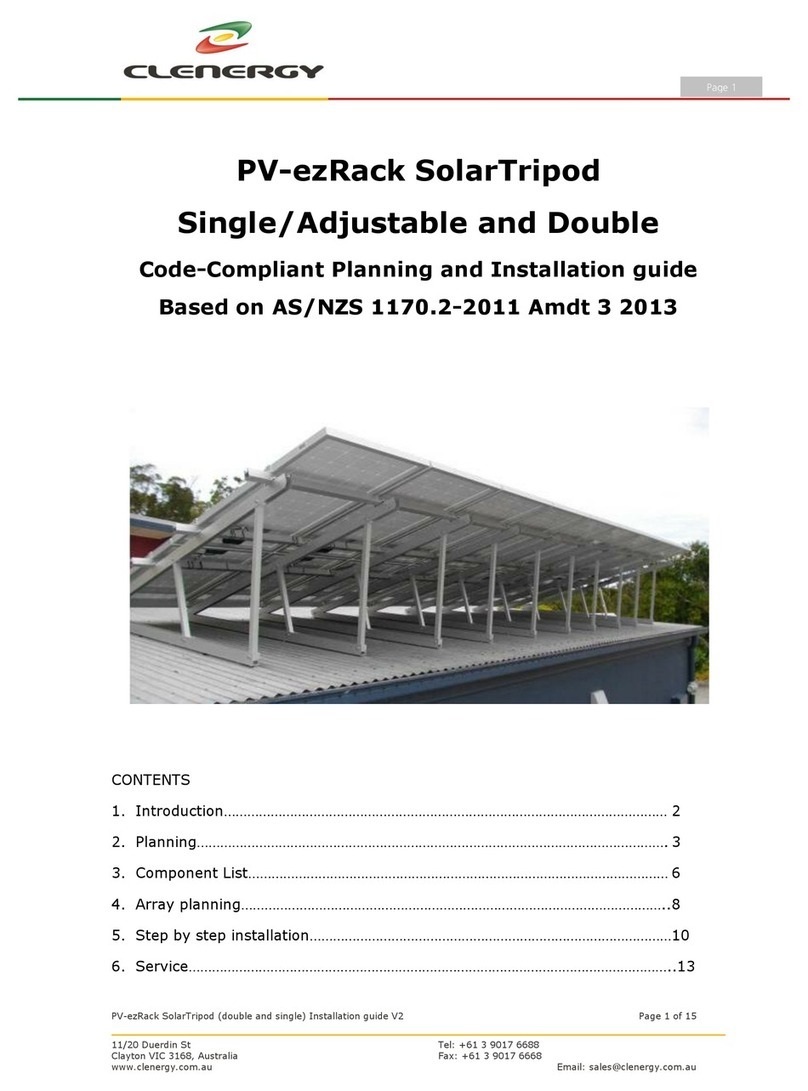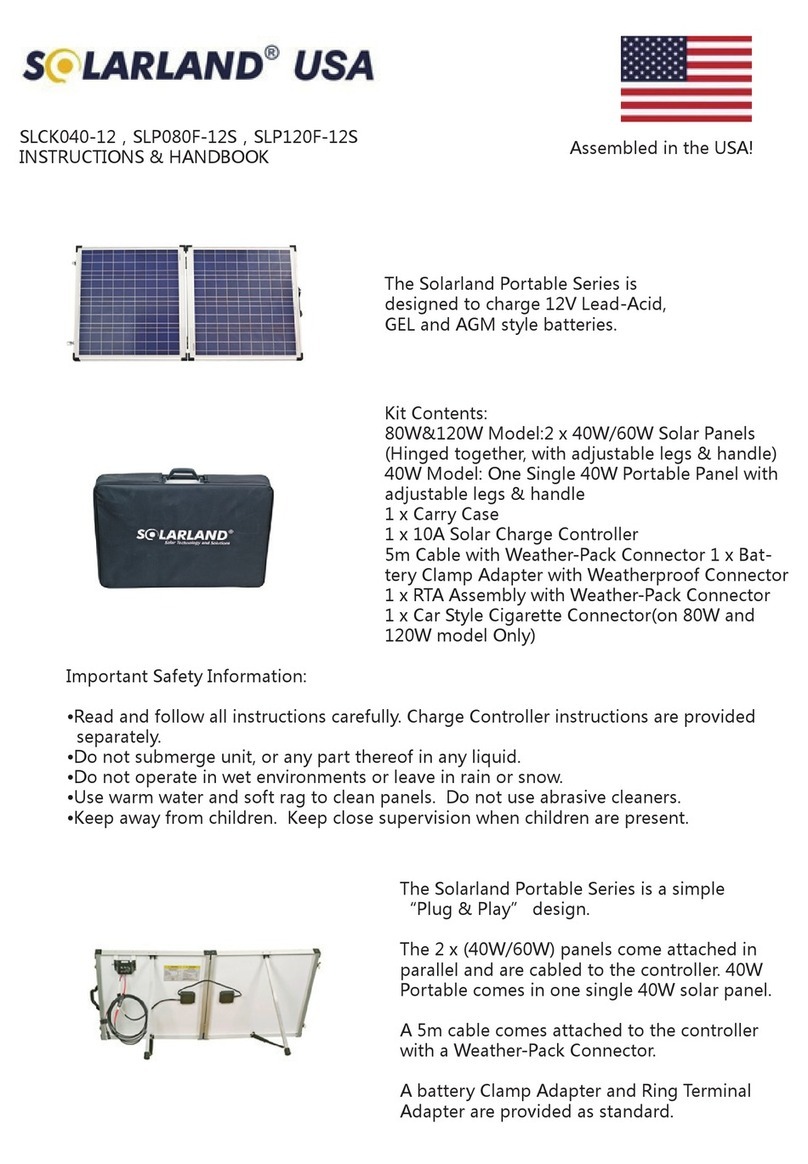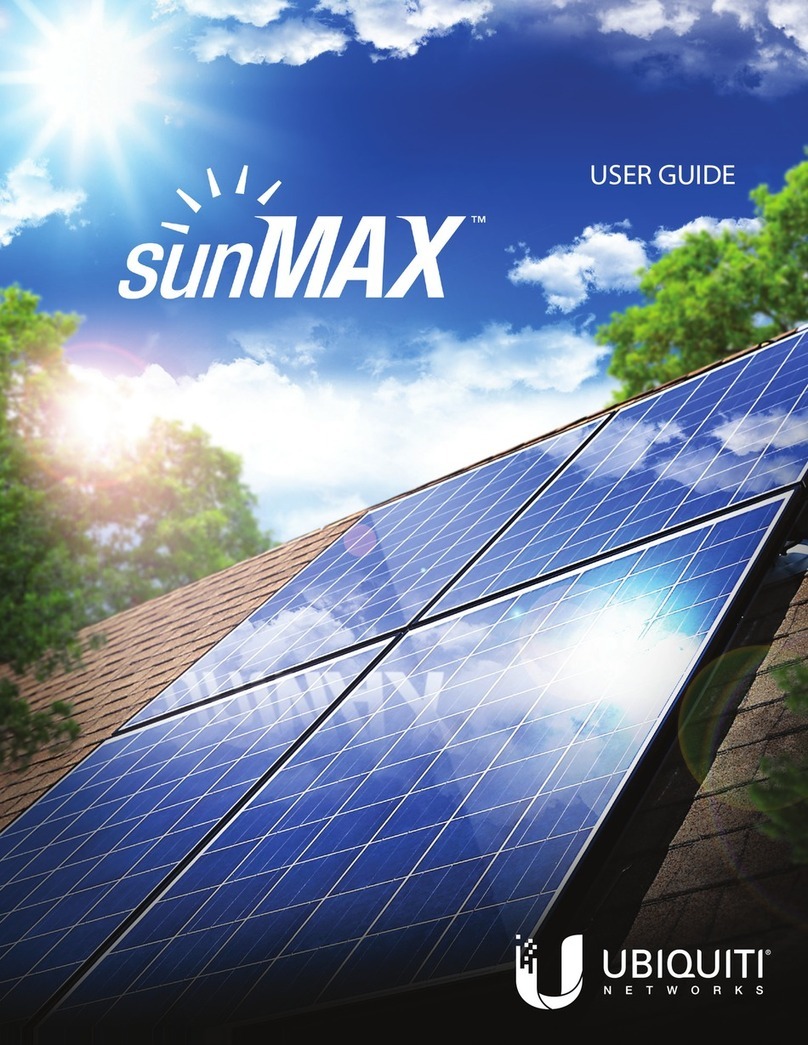
Open Loop 4
MOUNTING HARDWARE
Provided in the Eagle Sun package is specially
designed mounting hardware to speed collector
installation. This hardware consists of four LOCK-
TIGHT hinge sets, four roof brackets, two rear
struts, and bolts (Figures 3, 4,and 5).
(a) After locating the mounting points from Table
1, the mounting bracket holes should be drilled.
(b) A heavy coating of sealant should be applied to
the bottom of the flashing plate, which should
fit flat against the roof. It is necessary for the
plate to slide under the above shingles to insure
proper drainage of water.
(c) The bottom of the roof bracket and the area
around the threaded rod should also be
thoroughly coated with tar sealant. When the
bracket is set in place, alignment with the
collector hinges is necessary before final
tightening of the nuts. This should be
completed before the sealant has time to set.
(d) The threaded rod is fastened through a 2’ x 6”
wood or 2” x 2” x ¼” steel angle bracket under
the roof as shown.
(e) The rear struts should be cut and drilled to
conform to Table 1. All bolts should be
tightened securely. A stainless steel washer
should be placed where the threaded rod passes
through the aluminum bracket.
It is very important that the penetrations through the
roof be well sealed. It should be carefully checked
that all bolts are coated with tar and that no leaks
are possible.
There are three acceptable ways to secure the
collector mounting brackets to the roof.
1. Spanner Mounting
2. Lag Bolt Mounting
3. J-Bolt Mounting
In spanner mounting after the brackets are positions
on the chalk line, a 3/8” hole is drilled between the
rafters. Aluminum flashing is positioned over the
hole where the top of the flashing is extended up
under the shingle above the3/8” hole and extends
down over it. Caulk is applied between the flashing
and the roof. The bracket is then positioned over
the 3/8” hole using sealant between the bracket and
the flashing. A piece of 3/8” all-thread is then
inserted through the hole. A washer and nut secures
the all-thread to the bracket (be sure the seal
underneath the washer and on top of the nut). The
all-thread rod should extend about 4” below the roof
rafters. Drill a 3/8” hole in a 2 x 4 and insert the all-
thread rod through it. The 2 x 4 should span 2
rafters. With a washer and double bolt secure the
all-thread to the 2 x 4. Tighten down until the
bracket is tightly secured to the roof. Be careful not
to over-tighten and bell out the roof underneath the
bracket. (See Figure 6)
